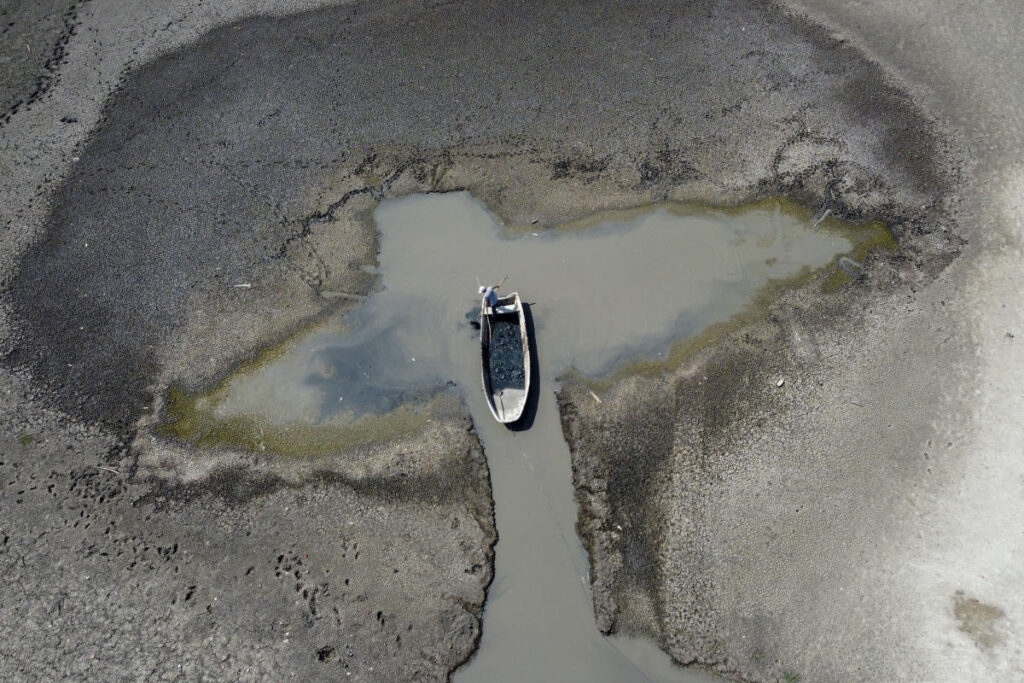BELGRADE, Serbia (AP) — Jelena Popovic normally loves summer and everything that comes with it, including the warm weather. But this year, it was just too much.
“This summer was too hot, you couldn’t walk in the city. It was only nice when you went swimming,” said Popovic, a resident of Belgrade, the capital of Serbia. “It was like a tropical summer, as if we were living in Africa and not in Europe.”
This was true for much of the Balkans, a region in southeastern Europe accustomed to hot summers. However, this region broke all records with repeated heat waves and almost completely dry Julys and Augusts.
According to experts, the summer of 2024 in the Balkans was the warmest since records began more than 130 years ago. Long periods of temperatures above 30 C (86 F) which did not drop below 20 degrees Celsius (68 degrees Fahrenheit) at night, pushed average temperatures to new highs, meteorologists said.
“Summer usually means alternating hot days with high temperatures and then a break after five to six days of rain and thunderstorms,” Serbian meteorologist Nedeljko Todorovic said. “But this happened only in June. Almost the entire month of July and August there was no rain, while high temperatures continued.”
Climate scientists say global warming, caused mainly by the burning of fossil fuels, has led to higher temperatures, with the world recently experiencing 13 consecutive monthly heat records.
The European climate service Copernicus reported on Friday that the summer of 2024 was also the warmest summer ever on Earth, making it even more likely that this year will be the warmest year ever recorded by humanity.
Southeastern Europe was “trapped” this summer under a subtropical warm air mass from West Africa and the Mediterranean, said Goran Pejanovic of the Serbian Hydrometeorological Service.
“We have had four heat waves… the most intense in July lasted from July 5 to July 21, almost three weeks without a drop of rain,” he said. Overall, this summer in Serbia was 3.3 degrees warmer than average, he added.
In Slovenia, an Alpine country bordering Austria and Italy, average summer temperatures were 2.5 degrees higher than in the period before 2020, the country’s Environment Agency said.
Slovenia’s summer passed without the cooler periods that are normal for the mountainous country, the report said. Record high temperatures were not found in the lowlands, but rather at higher altitudes in the Julian Alps, while temperatures across the country remained above 30 C (86 F) in early September.
“All records were broken” in Bosnia, including the number of very warm nights and days, which tripled in some areas compared to last year, which had previously set a record, said Bakir Krajinovic of Bosnia’s Hydrometeorological Institute.
In neighboring Croatia, the highest temperatures ever were recorded in the Adriatic Sea, with some areas reaching 30°C (86°F).
Last year it was earlier the warmest year ever recorded worldwideas human-caused climate change and the natural weather phenomenon El Niño, which is warming parts of the Pacific Ocean, have combined to create sweltering temperatures.
Heat waves are hotter, longer and more frequent, and some parts of the world are also experiencing longer and more frequent droughts. The world has warmed an average of about 1.2 degrees Celsius (2.2 Fahrenheit) since pre-industrial times.
Hot weather in the Balkans has dried up rivers in Bosnia and Serbia, sparked raging forest fires in Croatia, North Macedonia and Albania, shriveled crops and scorched farmland across the region.
Increasingly hot nights mean that the bodies of people, but also animals and plants, cannot cool down to get through the day. This is even more extreme in large cities, where concrete buildings radiate heat at night that has built up during the day.
Meteorologists in Montenegro reported that temperatures rose to as high as 29 degrees Celsius (84 degrees Fahrenheit) in some cities overnight.
While the very hot summer was good for the tourism sector along Albania’s coast, it was bad for agriculture and energy productionNearly 98% of Albania’s electricity comes from hydroelectric power plants that have been shut down by months of drought.
North Macedonia has seen around 2,000 forest fires in the past three months, three times more than in 2023. The blazes have destroyed tens of thousands of hectares of forest. Emergency official Stojanche Angelov warned that “it’s not over yet… if it doesn’t rain soon, we will have forest fires until November.”
Dozens of towns and cities in Serbia faced restrictions on drinking water due to the drought, with soldiers bringing water tanks into the mountains in the southwestern part of the country for thirsty cattle and horses.
In the north, the Rusanda Salt Lake, whose mud is used in medical therapy, dried up completely and turned into a moon-like gray surface. Jovica Mudric, from the local medical center, said they had to pour water from tanks to make mud for patients.
“It’s not the first time this has happened, but never like this year,” he said. “I know everyone loves summer, but we could use some rain.”
___
Konstantin Testorides in Skopje, North Macedonia, Llazar Semini in Tirana, Albania, Sabina Niksic in Sarajevo, Bosnia and Herzegovina, and Predrag Milic in Podgorica, Montenegro, contributed to this report.







